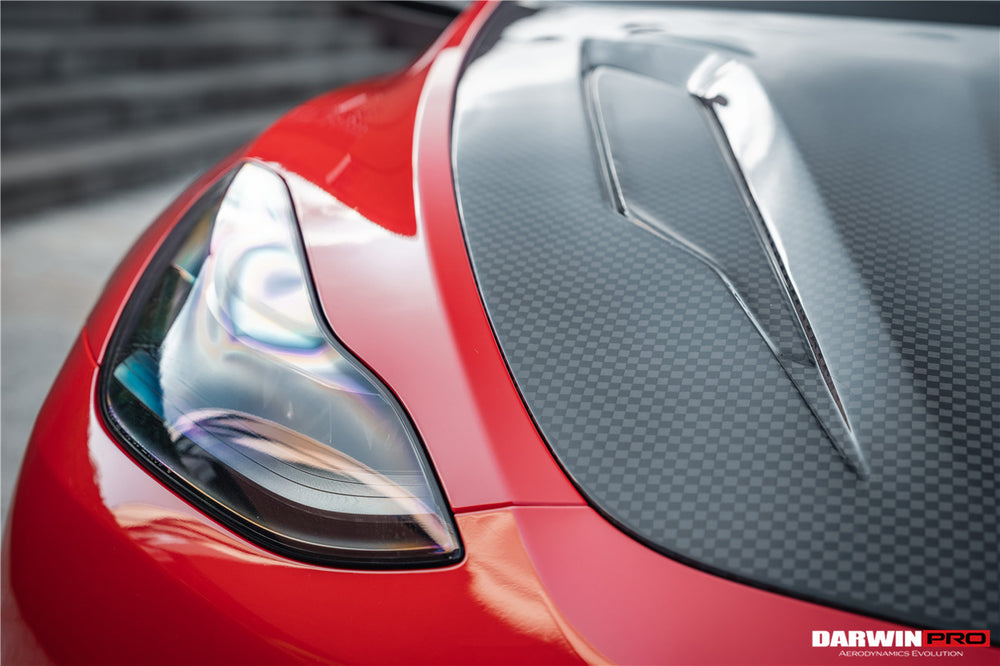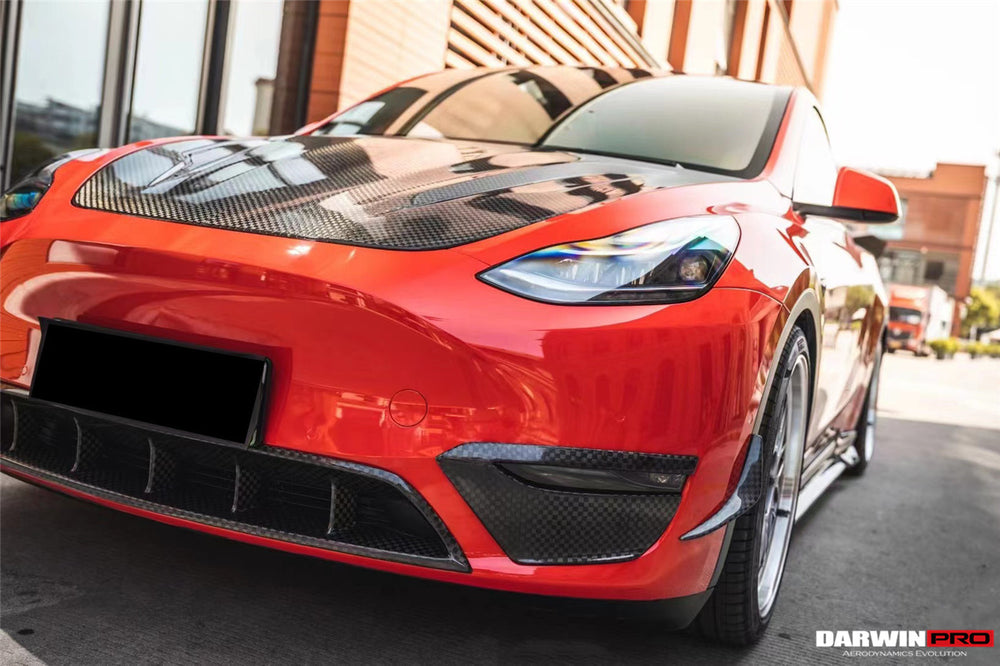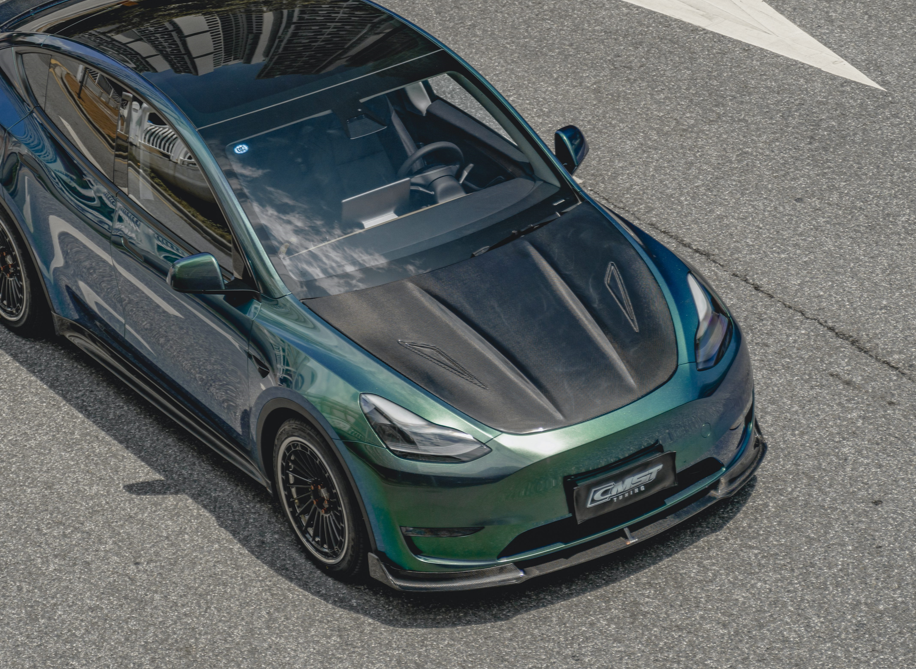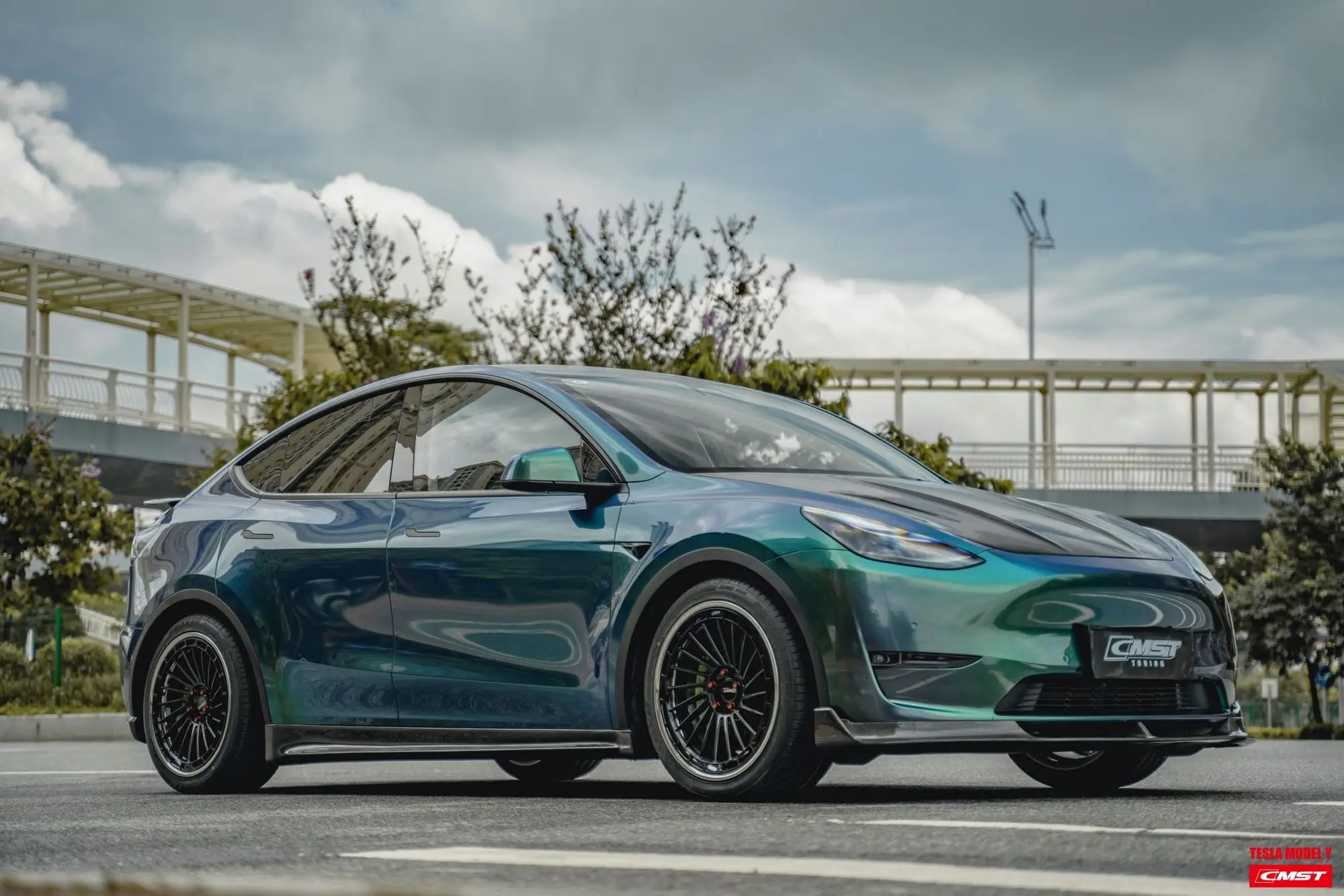Tesla Model Y Carbon Fiber Hood

Imagine sunlight glinting off the smooth, sculpted hood of a Tesla Model Y. But this isn't just any hood; it's a masterpiece of engineering, crafted from the lightweight, incredibly strong material of the future: carbon fiber. The air seems to shimmer around it, a testament to both its aesthetic appeal and the cutting-edge technology it represents. It's a subtle yet significant upgrade, hinting at a future where efficiency and performance go hand in hand.
This article delves into the exciting world of the Tesla Model Y and its potential carbon fiber hood. We'll explore the implications of this innovation, its background, and why it could be a game-changer for electric vehicle (EV) performance and design. This exploration will involve an examination of the broader context of carbon fiber usage in the automotive industry.
The Allure of Carbon Fiber
Carbon fiber is more than just a fancy material; it's a revolutionary composite that’s changing the way we think about vehicle construction. Known for its exceptional strength-to-weight ratio, it allows engineers to create lighter, more efficient vehicles. This, in turn, leads to improved performance, handling, and, critically for EVs, extended range.
The automotive industry has been flirting with carbon fiber for years, primarily in high-performance sports cars and luxury vehicles. Companies like Lamborghini and BMW have showcased the material's capabilities. The high cost of production has traditionally limited its widespread adoption.
However, technological advancements are gradually bringing the price down. This makes it more accessible for broader applications, like mass-produced vehicles. This shift marks a pivotal moment in automotive engineering.
Why Carbon Fiber for the Model Y Hood?
For the Tesla Model Y, a carbon fiber hood represents a strategic move towards enhancing efficiency and performance. The reduced weight over the front wheels can improve handling and responsiveness. Furthermore, a lighter vehicle requires less energy to accelerate and maintain speed.
This translates directly into increased range, a crucial factor for EV adoption. A potential carbon fiber hood aligns perfectly with Tesla’s mission. That mission is to accelerate the world’s transition to sustainable energy.
The aesthetic appeal shouldn't be overlooked either. The woven texture of carbon fiber adds a touch of sporty sophistication. It differentiates the Model Y and appeals to buyers seeking both performance and style.
The Benefits of a Lighter Hood
The advantages of a lighter hood extend beyond just increased range and improved handling. A lighter front end can contribute to better weight distribution. This leads to more balanced and predictable driving dynamics.
Moreover, a lighter vehicle is generally safer in the event of a collision. The vehicle can decelerate more quickly, potentially reducing the severity of an impact. This safety benefit makes the material even more compelling.
In addition, carbon fiber is known for its corrosion resistance. This property ensures a longer lifespan compared to traditional steel or aluminum hoods, potentially reducing long-term maintenance costs.
The Production Challenges
While the benefits are clear, producing carbon fiber components on a large scale presents significant challenges. The manufacturing process is complex and requires specialized equipment and expertise. This complexity contributes to the higher cost of carbon fiber parts.
Furthermore, ensuring consistent quality and durability across thousands of units is crucial. Any defects in the carbon fiber weave could compromise the hood's structural integrity. Therefore, strict quality control measures are essential.
However, advancements in automation and manufacturing techniques are steadily reducing these challenges. Tesla, known for its innovative production methods, is likely exploring ways to streamline the carbon fiber manufacturing process.
Tesla's Foray into Carbon Fiber
Tesla has previously experimented with carbon fiber in its vehicles, most notably in the Model S Plaid. The company utilizes a carbon-wrapped rotor in the Plaid's motors. This allows them to achieve incredibly high RPMs and power output.
This experience provides Tesla with valuable insights into the material's properties and manufacturing processes. They are in a better position to integrate it into other vehicle components. The potential carbon fiber hood for the Model Y is a logical next step.
While there hasn't been an official announcement from Tesla regarding a carbon fiber hood for the Model Y, speculation has been fueled by sightings of prototypes and rumors within the EV community. This speculation underscores the enthusiasm surrounding this potential upgrade.
Community Expectations and the Future
The Tesla community is eagerly anticipating any news regarding a carbon fiber hood for the Model Y. Online forums and social media groups are buzzing with discussions about its potential benefits and cost implications. This anticipation highlights the community's interest in innovative technologies.
If Tesla does introduce a carbon fiber hood, it could set a new standard for EV design and performance. It might also encourage other manufacturers to explore the use of carbon fiber in their vehicles. This competition could drive down prices and make the technology more accessible.
The future of automotive manufacturing may well involve widespread adoption of lightweight materials like carbon fiber. A potential move by Tesla in this direction could accelerate this trend.
Weighing the Cost and Benefits
The biggest hurdle for widespread carbon fiber adoption remains the cost. A carbon fiber hood would undoubtedly add to the Model Y's price tag. It's crucial to weigh the benefits against the increased expense.
For some buyers, the improved performance, handling, and aesthetic appeal may justify the higher cost. For others, the standard aluminum hood may suffice. Tesla may offer it as an optional upgrade.
Ultimately, the decision to incorporate carbon fiber will depend on a complex calculation. It will weigh performance gains, market demand, and manufacturing costs. These are all carefully considered factors by Tesla's engineers and executives.
Sustainability Considerations
While carbon fiber offers performance benefits, it's important to consider its environmental impact. The production of carbon fiber can be energy-intensive. This aspect raises concerns about its overall sustainability.
However, advancements in manufacturing processes are reducing the energy footprint of carbon fiber production. Recycling technologies are also improving. This makes the material more environmentally friendly.
Tesla is committed to sustainability, and would likely implement responsible practices in the production and disposal of carbon fiber components. This commitment aligns with the company's broader environmental goals.
A Glimpse into the Future of EVs
The potential for a carbon fiber hood on the Tesla Model Y offers a glimpse into the future of electric vehicles. As technology advances, EVs will become lighter, more efficient, and more appealing to a wider range of buyers. This development is vital for widespread adoption.
Carbon fiber is just one of many innovations that will shape the future of the automotive industry. Battery technology, autonomous driving systems, and advanced manufacturing techniques are all converging to create a new era of transportation. The era is more sustainable, and technologically advanced.
Whether or not the Model Y ultimately sports a carbon fiber hood, the discussion highlights the ongoing pursuit of innovation. Innovation drives the electric vehicle revolution forward. It promises a cleaner, more efficient, and more exciting future for all.


















